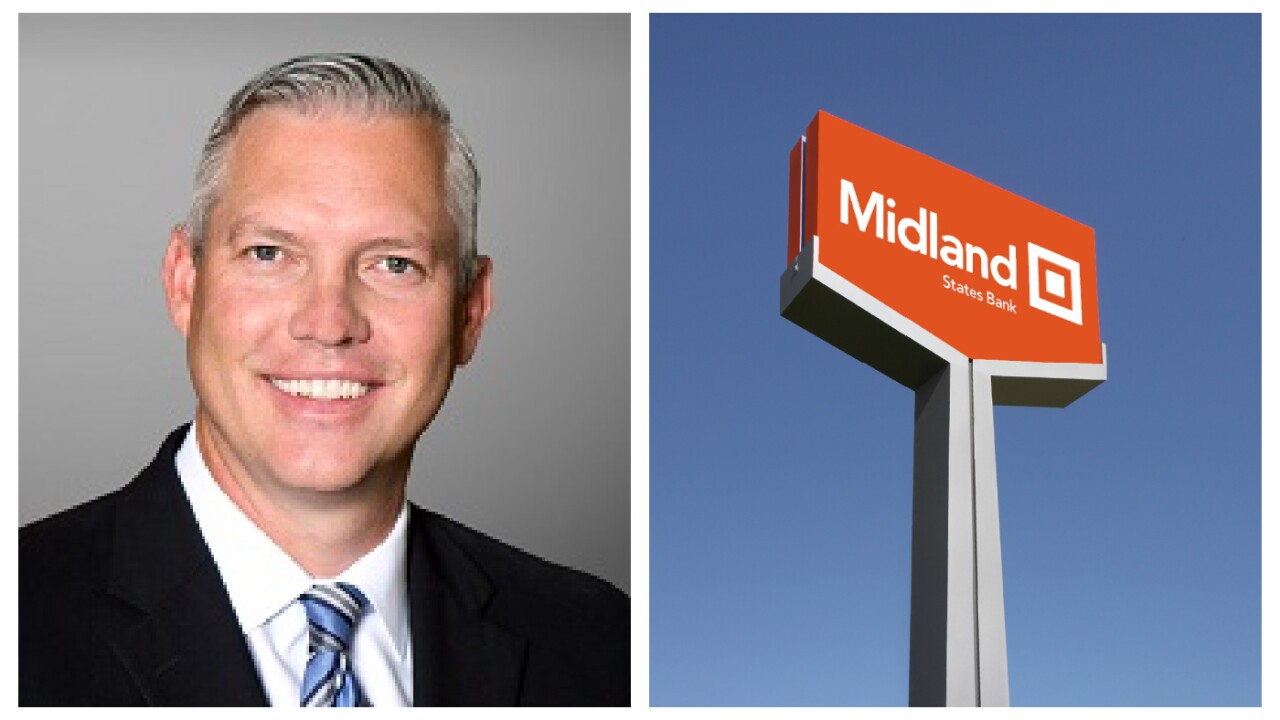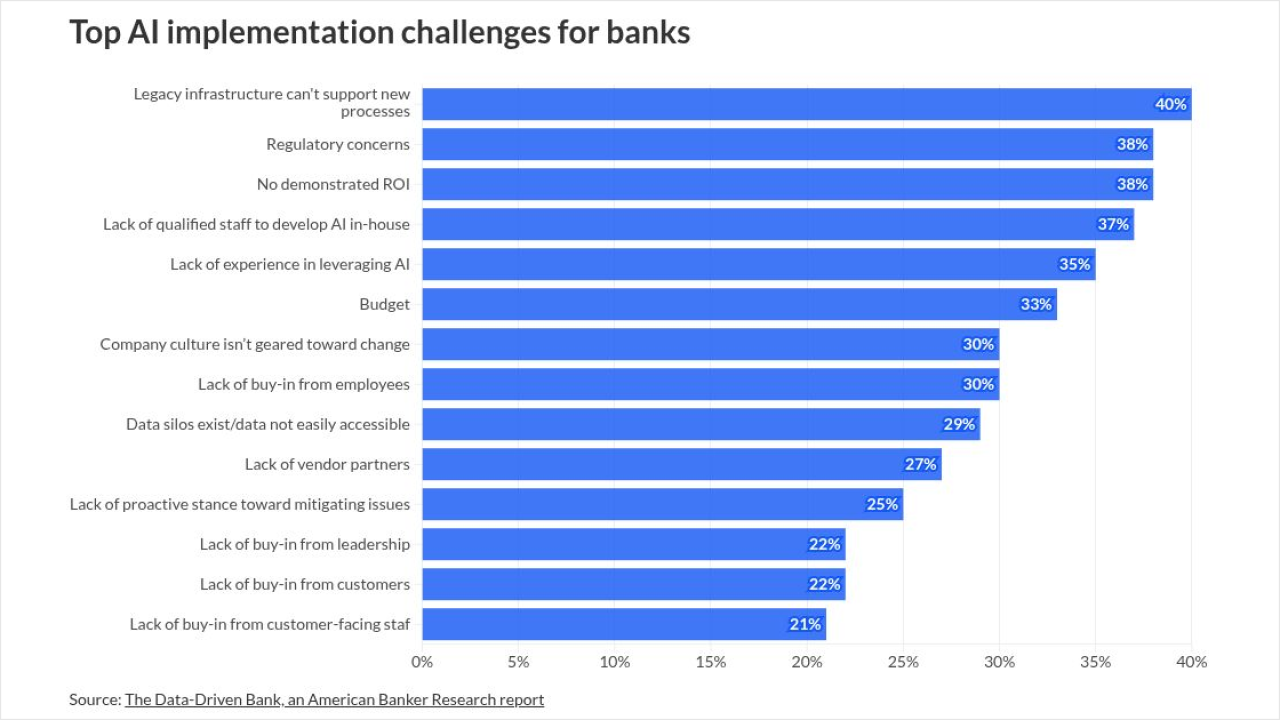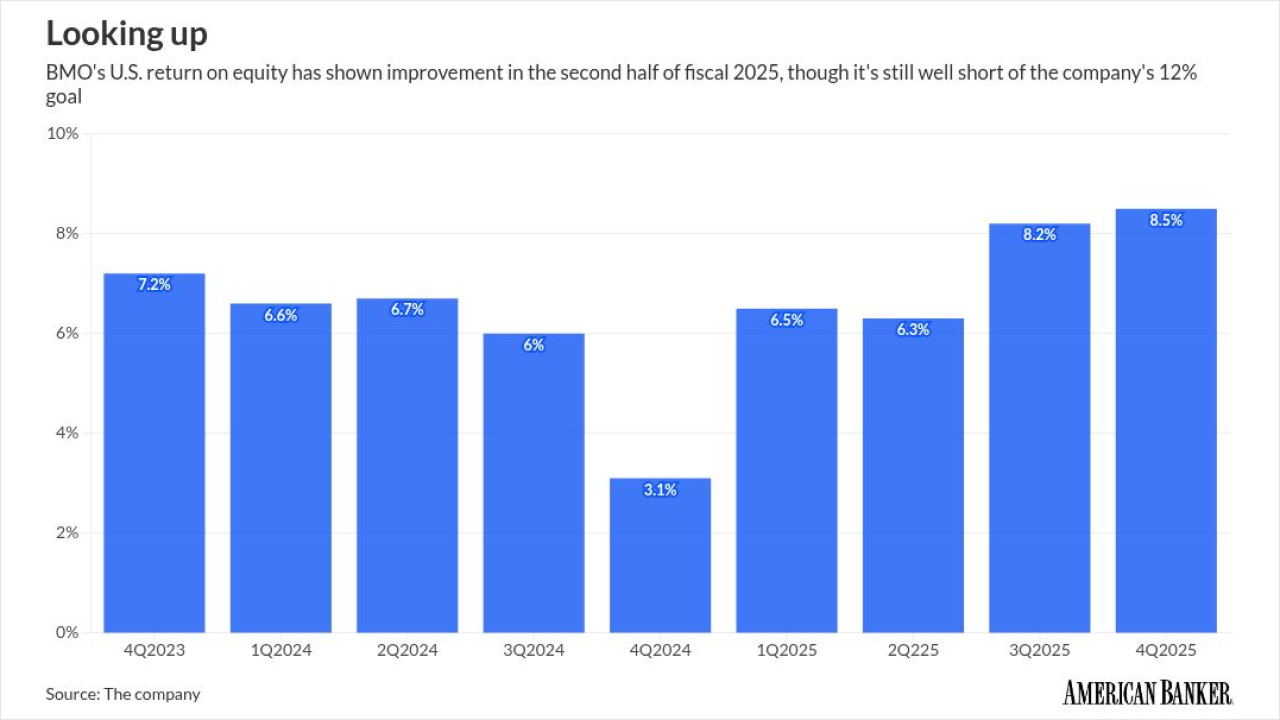-
The Federal Deposit Insurance Corp.'s second-quarter industry update showed steadily rising loan balances making up for persistently tight net interest margins.
September 2 -
Stock fluctuations will fuel investment banking fees in the short run, but a prolonged shock would complicate bank M&A and could tighten margins, crimp wealth management fees and present other risks.
August 24 -
Regulators need to be able to impose tough requirements on foreign banks with U.S. units in order to safeguard the domestic financial system from turbulence abroad. Sen. Richard Shelby's proposal to raise the asset threshold for systemically important banks would put that ability in jeopardy.
August 11
It's a fact: banks have been pumping up the volume on loans this year, hoping to offset low yields.
The trend raises two questions: Will it continue? Is there a downside?
Yes, and yes, according to chief executives at some prominent Midwestern community banks.
For Ed Wehmer, head of the $21 billion-asset Wintrust in Rosemont, Ill., the downside is sloppy underwriting that could come back to haunt lenders.
"If anyone asks 'What are you worried about?' I say credit. I'm starting to worry about credit again. It's getting kind of stupid," Wehmer said Wednesday at a Raymond James banking conference in Chicago.
Yet Wehmer and two local rivals — Michael Scudder at First Midwest Bancorp in Itasca, Ill., and Larry Richman at PrivateBancorp in Chicago — all predicted that loan volumes will continue to stay high in the third quarter in line with recent momentum.
Loan balances grew by $185 billion in the second quarter — the largest uptick since 2007, according to a recent
At the $16 billion-asset PrivateBancorp, organic loan growth has fueled expansion in the years following the financial crisis. In the second quarter, total loans rose 13%, to $12.5 billion, from a year earlier, mostly due to higher commercial loans.
Uncertainty about macro-level trends — from the slowdown in China to the Greek debt crisis — has made some of the bank's clients "cautious" about growth prospects, but it has not led them to pull back business with the bank, Richman said.
Richman told investors that he was traveling when the stock
Scudder, CEO of the $9.9 billion-asset First Midwest, remained bullish, too.
"Our [loan] pipeline remains solid; equal to or stronger than the second quarter," he said.
Through the first six months of 2015, First Midwest's assets increased by 4.4% and its deposits grew by $4.1%.
The company posted a profit of $42.6 million through June 30 and $69.3 million in 2014.
Last year, First Midwest made two significant buys, acquiring the $582 million-asset Great Lakes Financial Resources of Blue Island, Ill. for $61 million, as well as 12 Chicago branches from Popular for $18 million.
First Midwest is eager to add to its Chicagoland franchise. According to Scudder, the company is focused on banks with $350 million to $4 billion of assets. There are nearly 270 such banks in the five-state region of Wisconsin, Iowa, Illinois, Indiana and Michigan, he noted.
The chief executives had varying opinions on whether the push for growth and intense competition for loans would promote excessive risk taking that could produce a batch of defaults later.
Richman said his company has remained "selective and disciplined."
But Wehmer, whose bank is larger than the other two, is still worried.
"Right now the market is frothy — frothier than it's been" he said, pointing especially to recent commercial real estate deals that have been negotiated by private-equity firms and larger banks. "You've got real estate developers and successful guys who will throw a deal up against the wall, four banks will bid on it now, and the lowest price wins," Wehmer said.
Granted, Wintrust
But if credit risk accelerates in the market, Wintrust will implement a "rope-a-dope" lending strategy and simply pull back its lending in the region, Wehmer said, referring to Muhammad Ali's famous boxing style that involved absorbing short-term pain for long-term gain.
"If the market does move away and beyond our risk appetite, we will slow down," he said.





